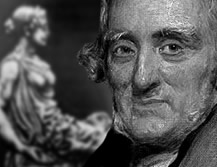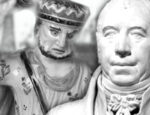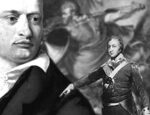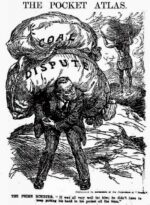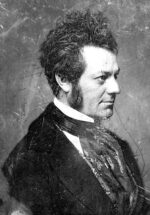Description
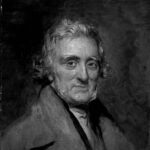 Marvel at the skill of John Henning – son of Samuel Henning, a Paisley carpenter and architect – who specialised in the reproduction of ancient Greek relief sculpture. In his teenage years Henning inherited both his father’s trade and his radical politics. Samuel Henning served as secretary of the Paisley Branch of the British Convention, the radical Scottish organisation campaigning for universal suffrage and parliamentary reform. John Henning would later claim to have been on a list in 1794 of 185 people in Paisley who were to be imprisoned under the suspension of the Habeas Corpus Act. Thankfully these arrests never took place. When Henning moved to London he continued in his fight for reform by selling the radical Paisley-printed Weavers Magazine.
Marvel at the skill of John Henning – son of Samuel Henning, a Paisley carpenter and architect – who specialised in the reproduction of ancient Greek relief sculpture. In his teenage years Henning inherited both his father’s trade and his radical politics. Samuel Henning served as secretary of the Paisley Branch of the British Convention, the radical Scottish organisation campaigning for universal suffrage and parliamentary reform. John Henning would later claim to have been on a list in 1794 of 185 people in Paisley who were to be imprisoned under the suspension of the Habeas Corpus Act. Thankfully these arrests never took place. When Henning moved to London he continued in his fight for reform by selling the radical Paisley-printed Weavers Magazine.
In 1799 Henning realised that what he called his ‘doll making’, the creation of plaster-cast likenesses of the local ‘great and good’, was becoming more lucrative than his father’s high-end house carpentry. To boost the value of these ‘dolls’ (often medallions with heads in profile), he experimented for a time with casting in vitreous enamel rather than plaster.
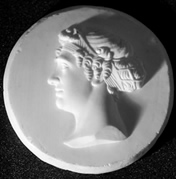 In 1811 Lord Elgin gave the now London-based Henning permission to draw and model from the Parthenon Marbles, which he famously either ‘saved’ or ‘stole’ from Athens (depending on your point of view). The President of the Royal Academy, Benjamin West was dismayed by Lord Elgin’s decision: “My Lord, to allow Mr. Henning to Draw from your Lordship’s Marbles would be like sending a boy to the University before he had learned his letters.” Following this transparently elitist and ultimately class-based petition, Elgin determined to grant permission to any artist—whosoever they might be—to draw the marbles. This allowed other middle- and lower-class artists, including the ‘Cockney Raphael’, Benjamin Robert Haydon, access which under the prevailing conventions of exclusivity he would most likely have been barred.
In 1811 Lord Elgin gave the now London-based Henning permission to draw and model from the Parthenon Marbles, which he famously either ‘saved’ or ‘stole’ from Athens (depending on your point of view). The President of the Royal Academy, Benjamin West was dismayed by Lord Elgin’s decision: “My Lord, to allow Mr. Henning to Draw from your Lordship’s Marbles would be like sending a boy to the University before he had learned his letters.” Following this transparently elitist and ultimately class-based petition, Elgin determined to grant permission to any artist—whosoever they might be—to draw the marbles. This allowed other middle- and lower-class artists, including the ‘Cockney Raphael’, Benjamin Robert Haydon, access which under the prevailing conventions of exclusivity he would most likely have been barred.
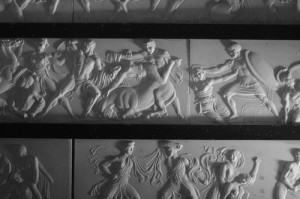 Henning made and sold a number of cabinets containing beautifully crafted (and to scale—1:20) reproductions of the Parthenon and Bassae Friezes (pictured). Examples may be viewed in the British Museum and Paisley Museum. In 1812 he was commissioned by Princess Charlotte to cast her likeness in classical dress (below). Since the Princess showed interest in his drawings of the Marbles, Henning took them to her house and later reported that “she was particularly struck with a male and female figure, which seemed intended for Hygeia and Esculapius. She took them in her left hand and between the forefinger and thumb of her right, and asked me, ‘Could you get that done for me in Ivory?’ When sitting for her Grecian portrait, the fashionable and much loved teenage princess (she was 15) even read some of Henning’s radical Scottish literature. After a perusal she politely remarked: “Mr Henning, I am not indulged with that kind of reading.”
Henning made and sold a number of cabinets containing beautifully crafted (and to scale—1:20) reproductions of the Parthenon and Bassae Friezes (pictured). Examples may be viewed in the British Museum and Paisley Museum. In 1812 he was commissioned by Princess Charlotte to cast her likeness in classical dress (below). Since the Princess showed interest in his drawings of the Marbles, Henning took them to her house and later reported that “she was particularly struck with a male and female figure, which seemed intended for Hygeia and Esculapius. She took them in her left hand and between the forefinger and thumb of her right, and asked me, ‘Could you get that done for me in Ivory?’ When sitting for her Grecian portrait, the fashionable and much loved teenage princess (she was 15) even read some of Henning’s radical Scottish literature. After a perusal she politely remarked: “Mr Henning, I am not indulged with that kind of reading.”
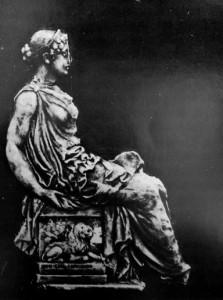 The Princess’s patronage helped Henning’s career. Josiah Wedgewood, for example, issued six of his medallions. One of his eight children, John Henning, junior, followed in his father’s footsteps, turning his stonemasonry skills more towards the installation of classical reliefs on buildings. He was, for example, commissioned to decorate the exterior of the Athenaeum Club in Pall Mall under his father’s supervision and his Parthenon marbles design. He also went on to produce the classical reliefs on Decimus Burton‘s triple screen at Hyde Park Corner and the reliefs for the front of the Manchester City Art Gallery. Internally, the frieze design was installed in 1838 around the top of the stair well in the Royal College of Surgeons.
The Princess’s patronage helped Henning’s career. Josiah Wedgewood, for example, issued six of his medallions. One of his eight children, John Henning, junior, followed in his father’s footsteps, turning his stonemasonry skills more towards the installation of classical reliefs on buildings. He was, for example, commissioned to decorate the exterior of the Athenaeum Club in Pall Mall under his father’s supervision and his Parthenon marbles design. He also went on to produce the classical reliefs on Decimus Burton‘s triple screen at Hyde Park Corner and the reliefs for the front of the Manchester City Art Gallery. Internally, the frieze design was installed in 1838 around the top of the stair well in the Royal College of Surgeons.
Sadly for Henning it was impossible for him to effectively copyright his classical relief work. His career was therefore plagued by competition from third parties who copied his work and reproduced it all over Britain and Europe. Neither as rich nor famous as he might have been, a 60-year-old Henning taught himself enough Latin, Greek and Hebrew to be able to discuss the merits and shortfalls of various translations of the Holy Scriptures with his friends — quite a feat for a man who left school at 13.

